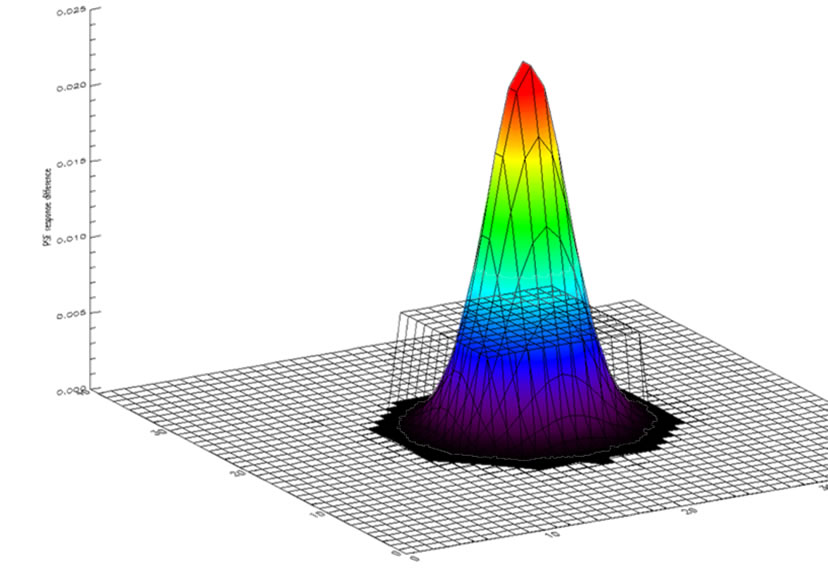Ongoing work
GOES-R ABI Development of the WFABBA for GOES-R ABI is multifaceted: | ||||||||||||||||||||||||||||||||||||
|
Sub-Pixel Fire Detection & Characterization The image to the right shows GOES-R ABI nominal pixels (grid) overlaid on coincident 30m resolution ASTER image (RGB 8-3-1) acquired on 19 Oct 2002 14:21:59UTC. WF-ABBA fire pixels are marked in red (credit: Wilfrid Schroeder). This illustrates a subpixel hotspot feature appearing in multiple full-resolution pixels as an artifact of the shape of the imager response function and relative position of the subpixel feature.
| ||||||||||||||||||||||||||||||||||||
|
In addition to fire detection location, WFABBA provides fire characterization in the form of estimate instantaneous fire size and temperature as well as fire radiative power (FRP). To solve fire size and temperature, a modified Dozier system of two equations with two unknowns can be solved for numerically.
There are two distinct forms of FRP, FRPDEF and FRPMIR as defined below.
| ||||||||||||||||||||||||||||||||||||
The fire radiative power (FRP) product is an important fire characteristic particularly in the emissions community. FRP is the time derivative of the fire radiative energy, which is proportional to the biomass consumed by the fire and can be estimated by applying Dozier solution to FRPDEF or from radiances using FRPMIR. Shown below is a GOES-12 scene with fires over Texas and Oklahoma on 9 April 2009 at 2045 UTC The units in the figure are in MW. This product is being tested in real-time in AWIPS at NSSL.
A consistent fire database exists for the Western Hemisphere dating back to 1997. It shows nearly twice as many processed fire detects occurred in 2007 compared to 2008 or 2009. This was in part due to the increased soybean production in 2007 and decrease in 2008 and 2009. A steady downward trend since 2004 has occurred in number of processed fire detects (besides 2007). Similar analysis has been generated for North America

Algorithm Description : History : Applications : Ongoing Work : People










